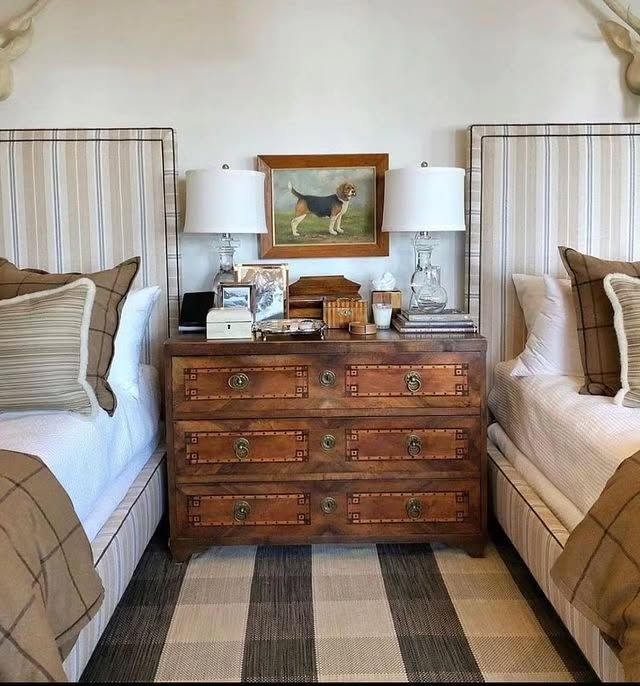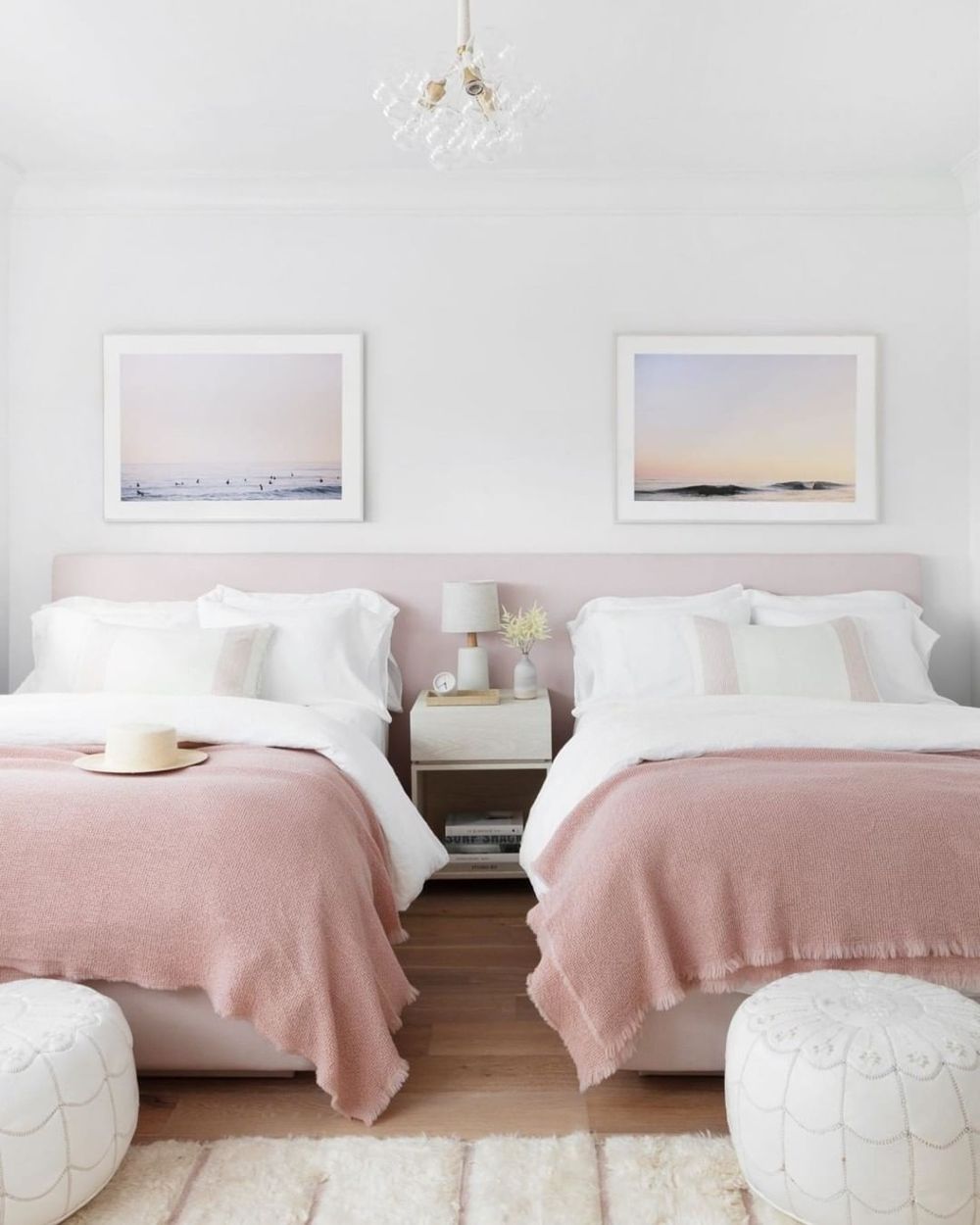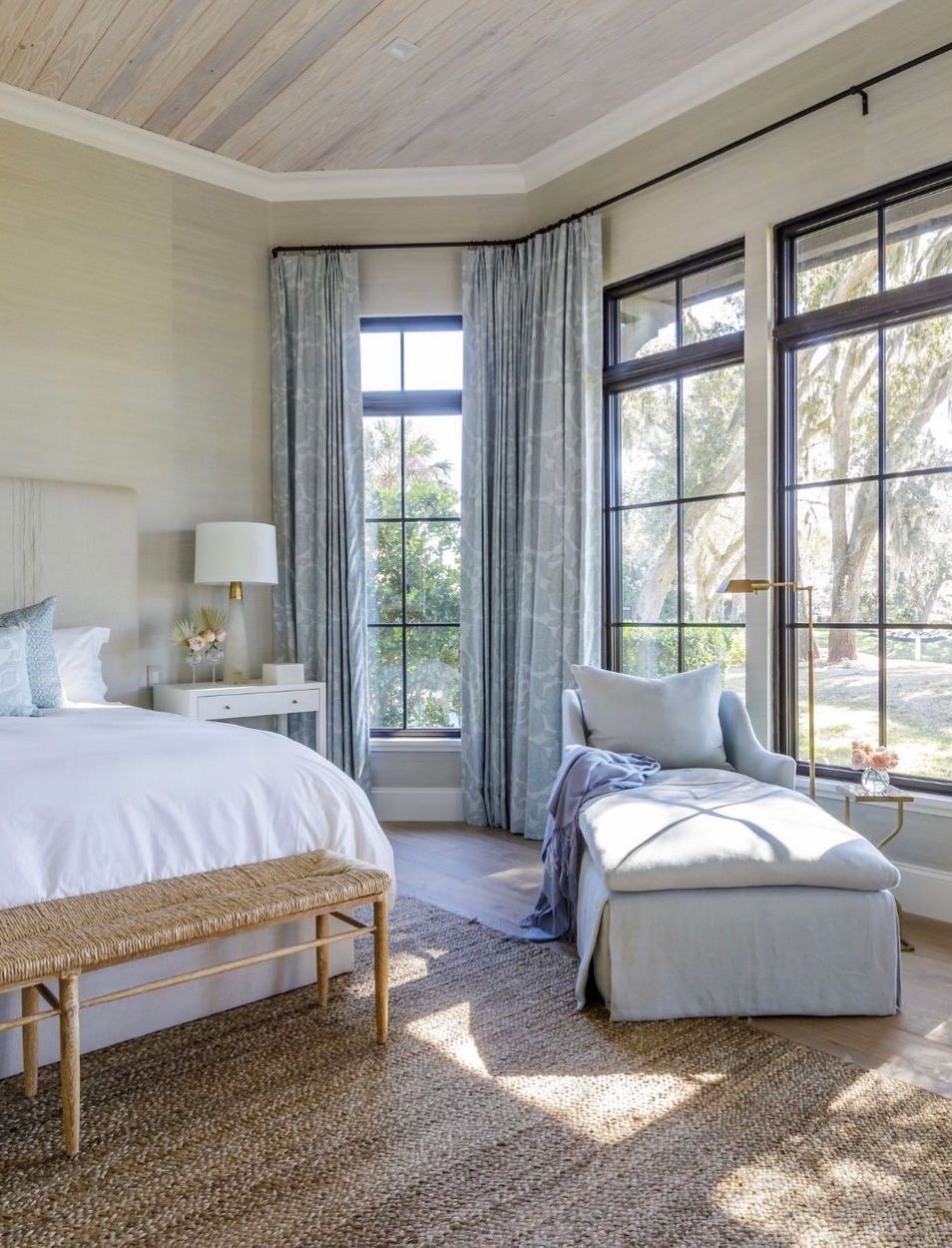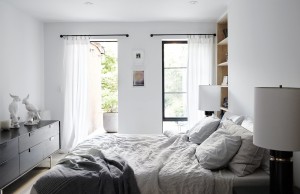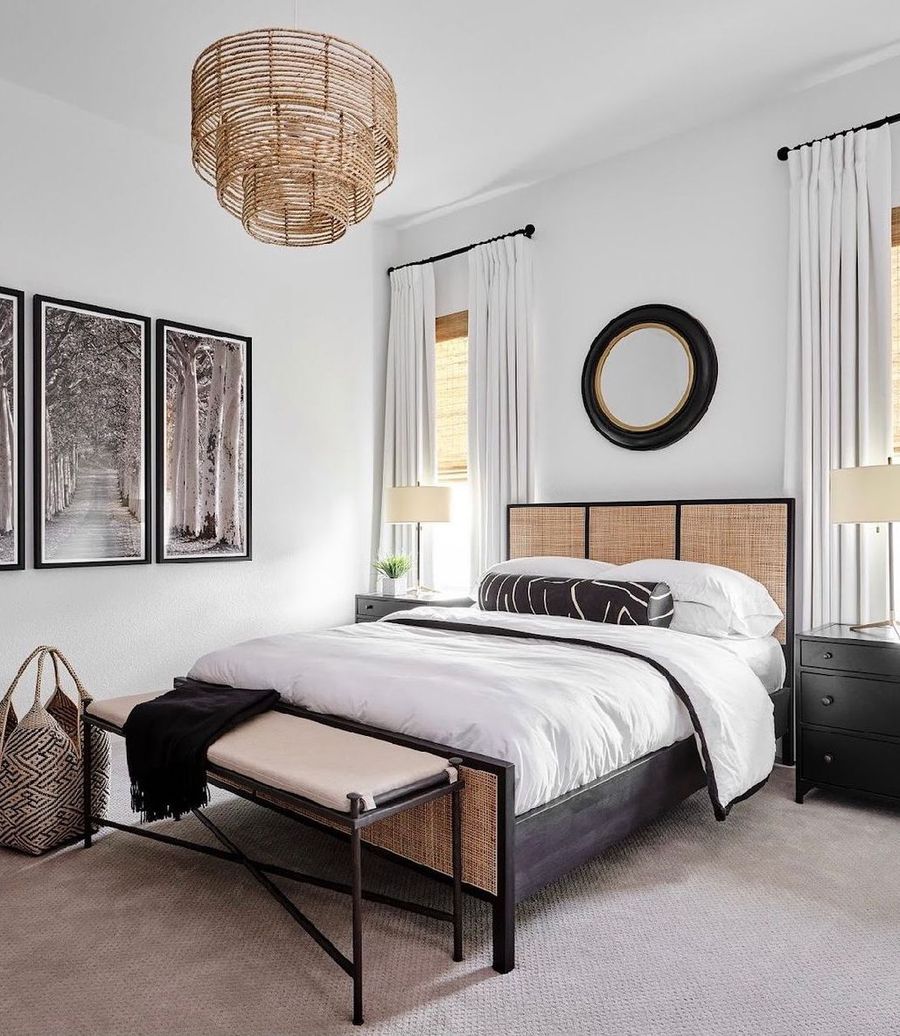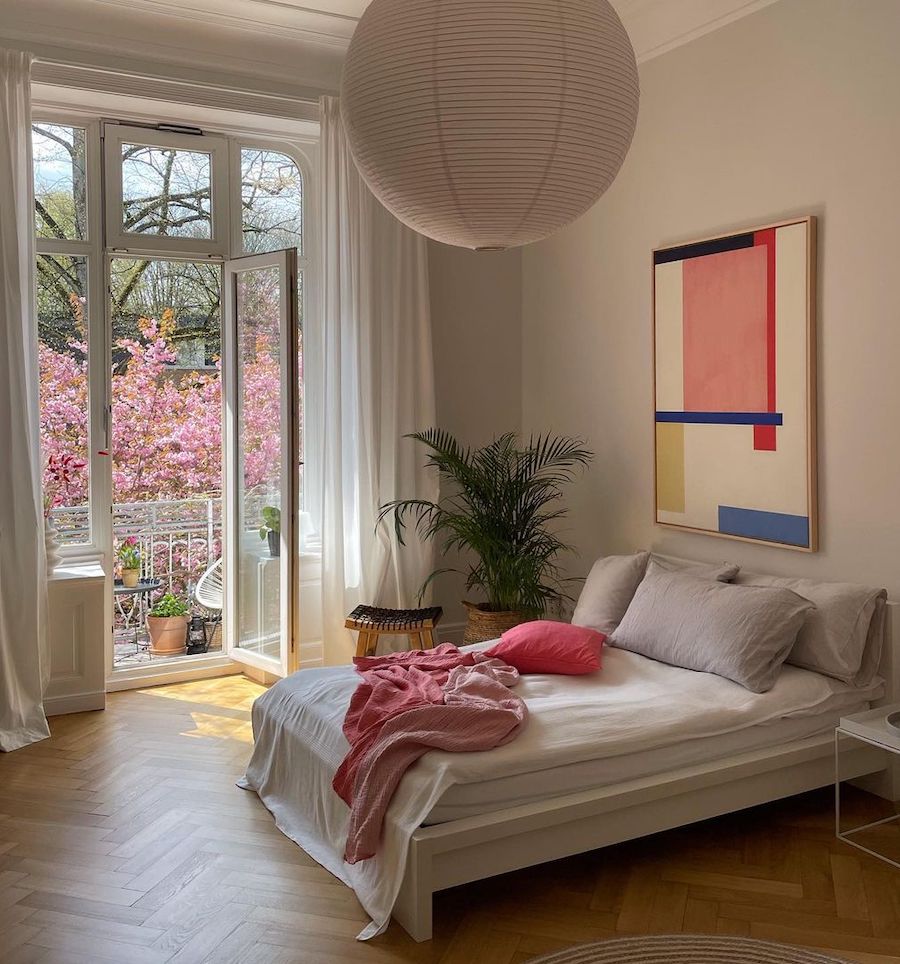The bedroom, a sanctuary where we retreat from the world and recharge for the day ahead. But what happens when you’re sharing this sacred space with someone special, whether that’s a partner, sibling, or even two kids who refuse to share? Suddenly, the traditional single-bedded bedroom no longer cuts it, and you’re left wondering how to create a harmonious and functional space that accommodates two beds without sacrificing style or comfort.
From coordinating bed frames to clever storage solutions, we’re about to dive into the world of decorating and interior design for bedrooms with two beds, and explore the endless possibilities for creating a peaceful retreat that you’ll both love.
Benefits of Bedrooms with Two Beds
Bedrooms with two beds offer a multitude of benefits that enhance both functionality and comfort in various living arrangements. One of the primary advantages is the flexibility they provide, making them ideal for families, friends, or even colleagues traveling together. By accommodating multiple occupants, these spaces can foster a sense of camaraderie while still allowing for personal space.
Moreover, bedrooms with two beds can easily adapt to different needs—whether it’s a guest room setup for visitors or a multi-purpose space for siblings sharing a room. From an interior design perspective, dual-bed arrangements can create a balanced and harmonious aesthetic. Designers can play with symmetry, employing matching or complementary bedding and decor that enhances the visual appeal of the space. This setup also opens opportunities for varied themes and styles, allowing for creativity in design elements, from light fixtures to wall art.
In addition to style, the practical aspects can’t be overlooked. Two beds can maximize the usable square footage in a room, allowing for efficient layouts that optimize movement and storage. Strategically placing furniture can also result in better flow and accessibility, making the room feel larger and more inviting.
Furthermore, such arrangements are advantageous for guests, providing them with the comfort of a separate sleeping area without sacrificing intimacy or the warmth of a shared environment. Overall, bedrooms with two beds not only cater to diverse occupancy needs but also enhance the overall design and functionality of living spaces.
Design Styles for Dual-Bed Configurations
When it comes to designing bedrooms with dual-bed configurations, the choice of design style plays a pivotal role in creating an inviting and functional space. One popular approach is the modern minimalist style, which emphasizes clean lines and uncluttered spaces. In this setting, dual beds can be positioned symmetrically to create balance and harmony, while a neutral color palette enhances the sense of openness.
Complementary furnishings such as sleek nightstands and streamlined accessories can further accentuate the minimalist aesthetic. On the other hand, a more eclectic approach allows for personal expression, where each bed can showcase distinct styles, textures, and colors, reflecting the individual preferences of the occupants. This can foster a fun and lively atmosphere, especially in a shared bedroom for siblings or roommates.
For a more luxurious appeal, a contemporary style featuring plush bedding, layered textiles, and eye-catching lighting can transform the dual-bed arrangement into a glamorous retreat. Utilizing soft, rich colors and textures can enhance the comfort level, while statement pieces like an oversized headboard or an artistic light fixture can serve as focal points. In contrast, the rustic style brings warmth and coziness to dual-bed setups through the use of wooden elements, warm earth tones, and vintage-inspired décor.
Placing beds within a frame of reclaimed wood can create a charming cabin-like feel, perfect for a serene getaway or a casual family room. Lastly, integrating themes from coastal or beach styles can evoke a sense of relaxation when using dual bed configurations. Soft pastels and nautical patterns can infuse a room with a breezy, light-hearted vibe, ideal for beach homes or summer retreats.
The incorporation of natural materials such as wicker or rattan, along with light and airy curtains, can enhance the breeziness and bring the serene essence of the outdoors inside. Ultimately, the choice of design style for dual-bed configurations should reflect not only the intended use of the space but also the preferences and lifestyles of its occupants, ensuring harmony and functionality in this unique sleeping arrangement.
Choosing the Right Bed Size and Style
When designing a bedroom with two beds, selecting the right bed size and style is crucial to ensuring comfort, functionality, and aesthetic appeal. Start by assessing the dimensions of the room; this will help you determine whether to opt for twin, full, or even queen-sized beds. Twin beds are often the go-to choice for maximizing space in smaller bedrooms, allowing room for additional furniture or open pathways.
In contrast, full or queen beds can also provide additional sleeping space while maintaining a cozy atmosphere, especially in larger rooms. Choosing a bed style is equally important, as it sets the tone for the entire room. For a classic look, consider traditional wooden bed frames that lend warmth and character. If you prefer a more modern aesthetic, sleek metal frames or upholstered beds with clean lines can create a contemporary vibe.
Additionally, think about the functionality of the beds; styles with built-in storage can be invaluable in a shared bedroom, helping to keep everything organized and tidy. Incorporating coordinating bedding and accessories will unify the space, while contrasting designs can add a dynamic flair. Ultimately, the right bed size and style should seamlessly blend with the room’s overall design theme, ensuring comfort for all occupants while enhancing the visual appeal of the bedroom.
Maximizing Space in Small Bedrooms with Two Beds
Maximizing space in small bedrooms that feature two beds can be a creative endeavor that transforms a cluttered area into a stylish and functional retreat. One of the most effective strategies is to consider the layout carefully; positioning the beds in an L-shape or parallel to each other can create more open floor space, making the room feel wider and easier to navigate.
Utilizing multifunctional furniture is another smart approach. For instance, beds with built-in storage or elevated designs that allow for under-bed compartments can help significantly reduce clutter while providing essential space for essentials. Incorporating vertical storage solutions, such as wall-mounted shelves or tall dressers, also draws the eyes upward, creating an illusion of height while maximizing usable floor space.
Color plays a vital role in making small bedrooms appear larger; lighter shades on walls, bedding, and furnishings can help to reflect light and open up the area. Adding mirrors strategically not only enhances natural light but also creates depth, further expanding the room’s visual space.
Additionally, open bed frames or minimalist designs can contribute to a feeling of airiness, as bulky furniture tends to dominate compact environments. Finally, don’t forget the importance of effective organization; utilizing decorative baskets or stylish boxes can keep items tidy without sacrificing aesthetics. By blending these strategies, you can create a harmonious sleeping space that caters to both style and practicality while accommodating two beds comfortably.
Color Schemes and Decor Ideas for Shared Bedrooms
When designing a shared bedroom with two beds, it’s essential to create a harmonious and inviting atmosphere that caters to both individuals’ tastes and needs. Color schemes play a vital role in achieving this balance. Soft neutrals, such as light grays, beiges, or pastels, can provide a calming backdrop that complements a variety of personal styles while encouraging relaxation.
These subtle tones can be accented with vibrant pops of color through accessories like bedding, artwork, or decorative pillows, allowing each resident to express their personality. For a more cohesive look, consider using a complementary color palette; for example, pairing soft blues and greens with coral or warm yellows can create a lively yet serene environment. Decorative elements can also enhance the overall aesthetic of a shared bedroom.
To maximize space and functionality, opt for versatile furniture pieces, like beds with built-in storage or multi-use nightstands. This not only helps in keeping the room organized but also provides individual storage for each occupant. Wall art can serve as a great way to reflect each person’s interests—consider a gallery wall that combines their favorite prints and photographs, framed in cohesive frames to maintain a unified look.
For additional warmth and comfort, layered textiles can play a significant role; mixing different patterns and textures in rugs, throws, and bedding can add depth and personality without overwhelming the space. Moreover, consider the layout of the room to ensure adequate flow and privacy.
Positioning the beds parallel or in an L-shape can promote better space utilization and provide a sense of separation. Incorporating room dividers, such as bookshelves or curtains, can further enhance privacy, especially if the shared bedroom is used by siblings or friends. Greenery in the form of plants or succulents adds a refreshing touch, improving air quality and fostering a connection with nature.
Ultimately, the key to designing a shared bedroom with two beds lies in collaboration and flexibility—allowing both occupants to contribute to the design process will help create a space that feels uniquely theirs while maintaining a cohesive overall aesthetic.
Creating a Functional Layout for Dual-Bed Bedrooms
Creating a functional layout for dual-bed bedrooms requires careful consideration of space, accessibility, and the needs of the occupants. When designing a room with two beds, whether for a shared room in a home or a guest space in a hotel, the placement of the beds is crucial.
Ideally, the beds should be positioned to allow easy movement between them while maximizing the available floor space. A common approach is to angle the beds slightly or place them parallel with a nightstand in between, facilitating an inviting sense of symmetry. It’s also important to consider the room’s natural light sources; placing beds near windows can create a sense of openness, but one should ensure that privacy is preserved with the appropriate window treatments.
In addition to bed placement, thoughtful organization of additional elements is vital to enhance functionality. Incorporating built-in storage solutions, such as under-bed drawers or overhead cabinets, can help minimize clutter and ensure that each occupant has designated space for their belongings. If the room allows, a small desk or a seating area can be included to provide a personal touch and accommodate different activities.
Lighting is another key component; using layered lighting, including overhead fixtures, bedside lamps, and task lighting, can cater to various preferences and needs. Another essential aspect is the style and ambiance of the room. Coordinating bedding and décor can create a harmonious look while allowing for individual expression if the occupants have different tastes.
To achieve a cohesive design, it’s advisable to choose a neutral color palette that can be accented with vibrant hues through accessories, artwork, or textiles. This not only fosters a relaxing environment but also ensures that the room is versatile enough to appeal to various users, from children and teenagers to adult guests. Ultimately, a functional layout for dual-bed bedrooms balances comfort, aesthetics, and practicality, making it an inviting space for shared living.
Storage Solutions for Bedrooms with Two Beds
When designing a bedroom that accommodates two beds, optimizing storage solutions becomes crucial to maintain a clutter-free and harmonious space. One effective approach is to utilize multifunctional furniture that can serve dual purposes, such as beds with built-in drawers underneath or bunk beds that incorporate shelving or desk space.
These designs not only maximize vertical space but also provide essential storage for clothing, linens, or personal belongings, which is particularly beneficial in smaller rooms. Additionally, integrating nightstands with drawers or opting for wall-mounted shelves can help free up floor space while offering convenient access to items like books, alarm clocks, or decorative elements.
Using modular storage solutions, such as stackable bins or baskets, can also enhance the organization, allowing for easy customization to meet individual needs. Implementing closet organizers, like hanging shelves or hooks, helps keep clothes and accessories in order.
Finally, consider the use of stylish storage ottomans or benches at the foot of each bed; these not only provide extra seating but also serve as hidden storage for blankets and pillows. By carefully selecting and arranging storage elements, a bedroom with two beds can feel spacious, functional, and aesthetically pleasing.
